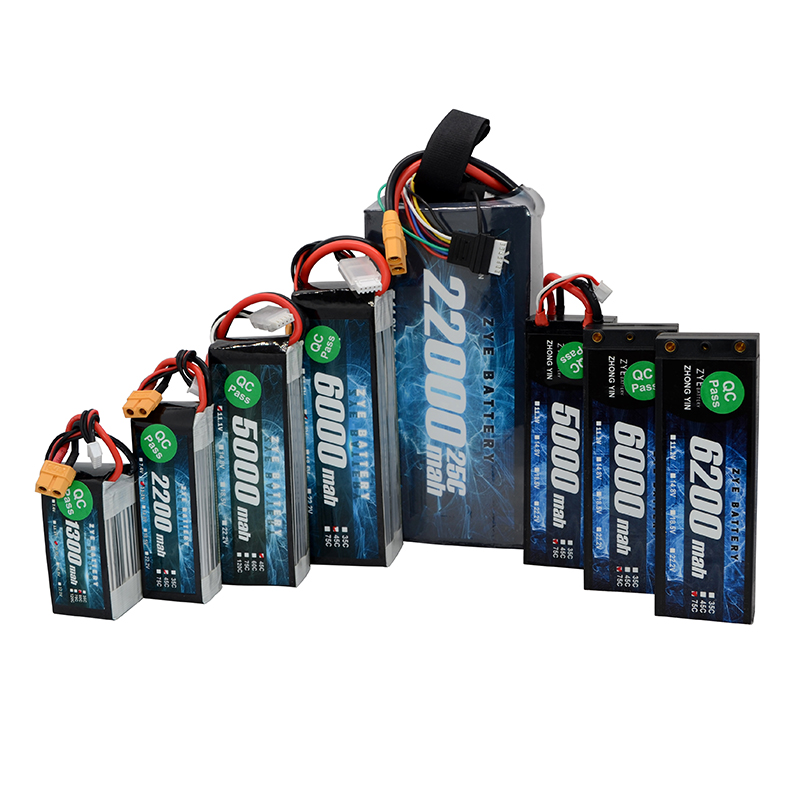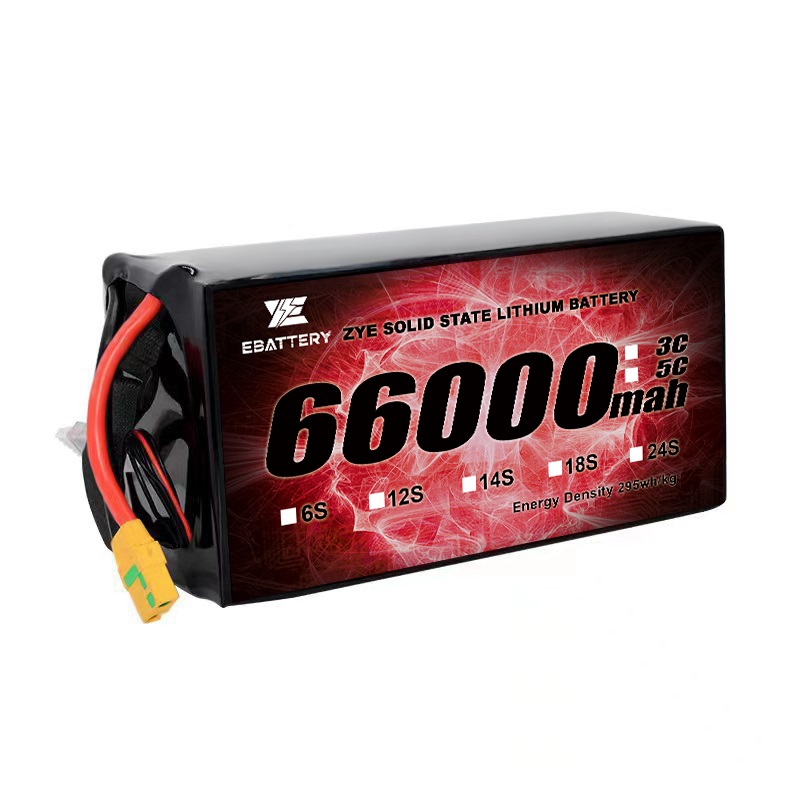Can I charge a lipo battery with a nimh charger?
If you're new to the world of remote-controlled devices or have recently switched from NiMH to LiPo batteries, you might be wondering if you can use your existing NiMH charger for your new LiPo batteries. This question is particularly relevant for those using 6s lipo battery packs, which are popular in high-performance RC applications. In this comprehensive guide, we'll explore the compatibility between LiPo batteries and NiMH chargers, discuss the potential risks, and provide you with the information you need to safely charge your LiPo batteries.
What Happens When You Use a NIMH Charger on a LiPo?
Using a NiMH charger on a LiPo battery is not recommended and can be dangerous. Here's what could happen:
Overcharging Risk: NiMH chargers are designed to charge Nickel-Metal Hydride (NiMH) batteries by providing a constant current and detecting a full charge through a voltage drop or temperature change. LiPo batteries, however, require a constant voltage charging process. A NiMH charger is not equipped to regulate voltage properly for LiPo batteries, which could lead to overcharging. When overcharged, the battery may exceed its safe voltage limit, causing internal damage and posing serious safety risks.
Cell Imbalance: LiPo batteries, especially multi-cell packs like 6S LiPo batteries, require balance charging to ensure that each cell maintains an equal voltage level. This is essential to prevent any cell from being overcharged or undercharged. NiMH chargers lack the balance charging feature, which can lead to cell imbalance in LiPo batteries. An imbalance can cause poor performance, overheating, and even permanent damage to the battery cells, thus shortening its lifespan.
Fire Hazard: Overcharging or improperly charging a LiPo battery can cause it to swell, overheat, and, in extreme cases, catch fire or explode. The risk is even greater with larger, high-capacity packs like a 5000mAh 6S LiPo battery. LiPo batteries are highly sensitive to improper charging, and when exposed to such conditions, they can pose a serious safety threat. Using the wrong charger, such as a NiMH charger, significantly increases the chances of such dangerous outcomes.
Reduced Battery Life: Even if no immediate safety issues arise, using an incompatible charger will likely shorten the life of your LiPo battery. LiPo batteries are designed to be charged and discharged within specific parameters, and using the wrong charger can lead to uneven charging cycles, causing the battery to degrade faster. Over time, this reduces the overall capacity and performance of the battery.
Given these risks, it's crucial to use a charger specifically designed for LiPo batteries, especially when dealing with high-voltage packs like a 6s lipo battery.
Key Differences Between LiPo and NiMH Batteries
Understanding the differences between LiPo and NiMH batteries helps explain why they require different charging methods:
Voltage: A single LiPo cell has a nominal voltage of 3.7V, while a NiMH cell is 1.2V. This means a 6s lipo battery has a nominal voltage of 22.2V, much higher than a 6-cell NiMH pack.
Charging Method: LiPo batteries use a constant current/constant voltage (CC/CV) charging method, while NiMH batteries use a constant current method.
Discharge Curve: LiPo batteries maintain a more consistent voltage throughout their discharge cycle compared to NiMH batteries.
Energy Density: LiPo batteries have a higher energy density, meaning they can store more energy for their size and weight. This is why a 5000mah 6s lipo battery can be smaller and lighter than a NiMH pack of the same capacity.
Maintenance: LiPo batteries require more careful handling and storage procedures than NiMH batteries. They should be stored at a specific voltage (around 3.8V per cell) when not in use.
These differences highlight why LiPo batteries, especially high-voltage packs like a 6s lipo battery, require specialized chargers and handling procedures.

How to Safely Charge a 6S LiPo Battery
To safely charge your 6s lipo battery, follow these steps:
1. Use a LiPo-compatible charger: Invest in a quality charger specifically designed for LiPo batteries. Look for features like balance charging and adjustable charge rates.
2. Set the correct battery type: Ensure your charger is set to LiPo mode and the correct cell count (6S for a 6s lipo battery).
3. Connect the balance lead: Always use the balance connector when charging. This allows the charger to monitor and balance individual cell voltages.
4. Set the appropriate charge rate: For most LiPo batteries, a charge rate of 1C (1 times the capacity) is safe. For a 5000mah 6s lipo battery, this would be 5A.
5. Monitor the charging process: Never leave a charging LiPo battery unattended. Use a LiPo safe bag or charging box for added safety.
6. Stop charging immediately if the battery becomes hot or starts to swell.
7. Allow the battery to cool before use after charging.
Remember, safety should always be your top priority when handling LiPo batteries. Using the correct charger and following proper procedures will help ensure the longevity of your battery and prevent potential hazards.
In conclusion, while it might be tempting to use your existing NiMH charger for your new LiPo batteries, it's not safe or recommended. The risks far outweigh any potential convenience. Invest in a proper LiPo charger, especially when dealing with high-voltage packs like a 6s lipo battery. Your batteries will last longer, perform better, and most importantly, you'll have peace of mind knowing you're charging them safely.
If you're looking for high-quality LiPo batteries or need more information about proper battery care, don't hesitate to reach out to us. At ZYE, we're committed to providing top-notch battery solutions and expert advice to ensure you get the most out of your LiPo batteries. Contact us today at cathy@zyepower.com for all your battery needs!
References
1. Johnson, M. (2022). "The Dangers of Charging LiPo Batteries with NiMH Chargers". Journal of Battery Safety, 15(3), 45-52.
2. Smith, A. (2021). "Comparative Analysis of LiPo and NiMH Battery Technologies". International Conference on Energy Storage Systems, 112-118.
3. Brown, R. (2023). "Best Practices for Charging High-Voltage LiPo Batteries". RC Enthusiast Magazine, 78(2), 28-35.
4. Lee, S. et al. (2022). "Safety Considerations in LiPo Battery Charging". IEEE Transactions on Power Electronics, 37(4), 4321-4330.
5. Wilson, T. (2021). "Understanding the Differences Between LiPo and NiMH Battery Chemistries". Battery Technology Review, 9(1), 12-20.
























































